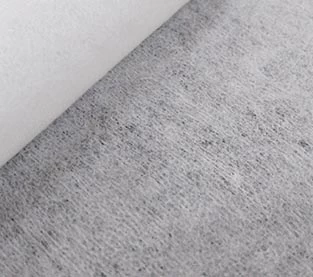Product: ES Material Fiber Nonwoven Fabric For Packaging
Raw Material: PP+PE
Nonwoven Technology: thermal bonded
Dotted Design: dot or plain
Gram: 25 gsm - 30 gsm
Color: White
Specification: custom
Sample: Can be provided without charge, freight to be collect
Applications:
Medical(20-60gsm): face masks,diapers,bed sheets,curtains,pillow covers,sanitary,etc
Packaging(25-30gsm): tea bag, coffee bag/filter paper, dust-proof covers.etc
Product: ES Thermal Bonded Non Woven Fabric For Tea Bag
Raw Material: PP+PE
Nonwoven Technology: thermal bonded
Dotted Design: dot or plain
Gram: 25 gsm - 30 gsm
Color: White
Specification: custom
Sample: Can be provided without charge, freight to be collect
Applications:
Medical(20-60gsm): face masks,diapers,bed sheets,curtains,pillow covers,sanitary,etc
Packaging(25-30gsm): tea bag, coffee bag/filter paper, dust-proof covers.etc
Product: Composite Non Woven Paper Desiccant Packaging Material
MOQ: 1000 kg
Material: Composite Non Woven Paper
Specification: Custom sizes.
Design: Welcome custom logo and design. Welcome OEM.
Color: Full Color of CMYK,Pantone Color as customer requirements
Weight: Based on size & material,thickness
Delivery Time: 10-15 days after confirmed the final artwork and order
Product: Desiccant Wrapping Paper
MOQ: 1000 kg
Material: DuPont Material
Specification: Custom sizes.
Design: Welcome custom logo and design. Welcome OEM.
Color: Full Color of CMYK,Pantone Color as customer requirements
Weight: Based on size & material,thickness
Delivery Time: 10-15 days after confirmed the final artwork and order
Product: Bi-component Non Woven Fabric Desiccant Packaging Material
MOQ: 1000 kg
Material: Bi-component Non Woven Fabric
Specification: Custom sizes.
Design: Welcome custom logo and design. Welcome OEM.
Color: Full Color of CMYK,Pantone Color as customer requirements
Weight: Based on size & material,thickness
Delivery Time: 10-15 days after confirmed the final artwork and order
Product: Spunbond Non Woven Fabric Custom Desiccant Packaging Material
MOQ: 1000 kg
Material: Spunbond Non Woven Fabric
Specification: Custom sizes.
Design: Welcome custom logo and design. Welcome OEM.
Color: Full Color of CMYK,Pantone Color as customer requirements
Weight: Based on size & material,thickness
Delivery Time: 10-15 days after confirmed the final artwork and order
It is getting more and more popular. I cameto consult the processing customers of sanitary napkins, and I also like cotton-woven non-woven products. At present, the quality evaluation of cotton non-woven fabrics has no national standards or industry standards. There arefive errors in the evaluation of the quality of nonwovens(China Viscose Nonwovens Supplier) by users andconsumers.
Myth 1: The way to form a network is betterthan combing it.
There are two ways to form a net, namelycross laying and combing. The cross-laying net has two-way strength, good wear resistance, and is not easy to pilling, but it is easy to leak sideways. Thecarding net advantage is not easy to leak side, easy to rub and blur. Since the sanitary manufacturer can select a process according to different products, the general sanitary napkin is selected for carding, and the diaper is selected across the net.
Myth 2: Cotton fabric is a feature of all cotton non-woven fabrics
Cotton hulls are natural impurities incotton fibers that move and fall off, so they must be removed, which can posesome potential hazards to sanitary napkins and diaper products. Some people usecotton hull as the basis for identifying cotton non-woven fabrics. In fact,this is a misleading. The identification of cotton is very simple. As long asthe burning cotton has no odor, the burning ash will not enter a ball and roll.


Myth 3: The bigger the water, the better.
Sanitary napkins and diapers use cotton non-woven fabrics(Viscose Nonwovens On Sales) as surface materials. If the water absorption is too strong,the surface will be very moist, uncomfortable, and will also breed bacteria.Therefore, it is necessary to ensure that the sanitary napkins and the surfaceof the diapers are dry and the moisture of the fabric is more important than water absorption. .
Myth 4: No fluorescer allowed
Everyone is advocating that health products without fluorescein are good. We know that no fluorescein is of course thebest, but it can't be done in the actual production process. Cotton is anatural plant that is the seed of the cotton anemone family. Cotton fiber is aseed that contains natural oils that can fluoresce. During the production of nonwovens, it is not possible to remove all grease to ensure absolutely no fluorescence. Currently, most cotton nonwovens(Spunlace Non Woven Company) are used in hygiene products,not medical supplies, so there is no need to inhibit fluorescence. The simple identification method is: at night, turn off the surrounding light source, useultraviolet light, illuminate the cotton non-woven fabric, and do not form apiece of fluorescence, that is, a qualified product.
Myth 5: PH should be neutral
Many people believe that non-woven fabrics that come into contact with the skin should be neutral with a pH between 6.5and 8.5. This is a misunderstanding. Human skin is weakly acidic, especially for babies, so suitable PH
Should be between 4.0 and 7.5. Cotton non-woven fabrics can be implemented in accordance with Class A and Class Bproducts of GB 18401-2010 National Textile Products Basic Safety Technical Specifications.